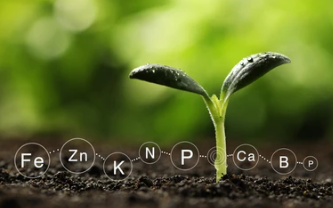BASIC AGRICULTURE
Introduction
It is the science or art of farming, which includes cultivation of the soil for the raising of crops and the rearing of animals to provide food, wool, and other products used in our daily life.Derived From
Certainly! Agriculture is the practice of cultivating plants, raising animals, and other activities related to food production. It plays a crucial role in providing food, fiber, and other resources for human consumption and economic development. Here are some basic details about agriculture:
1. Types of Agriculture: There are various types of agriculture, including subsistence farming (for self-consumption), commercial farming (for profit), organic farming (without synthetic chemicals), and intensive farming (high input and output).
2. Crop Cultivation: Farmers grow a wide range of crops, including cereals (such as wheat, rice, and corn), fruits, vegetables, oilseeds, pulses, and cash crops (like cotton, tobacco, and coffee). Different crops require specific growing conditions, such as soil type, temperature, and water availability.
3. Livestock Rearing: Animal husbandry is another aspect of agriculture. It involves raising livestock, such as cattle, poultry, pigs, sheep, and goats, for meat, milk, eggs, and other products. Livestock farming requires proper care, feeding, and management to ensure their health and productivity.
4. Agricultural Techniques: Farmers employ various techniques to enhance productivity and efficiency. These include irrigation methods, crop rotation, use of fertilizers and pesticides, mechanization, genetic modification, and precision farming techniques like hydroponics and vertical farming.
5. Environmental Impact: Agriculture has both positive and negative environmental impacts. While it provides food security, it can also lead to deforestation, soil erosion, water pollution, and greenhouse gas emissions. Sustainable farming practices aim to minimize these negative effects and promote long-term environmental stewardship.
6. Importance of Agriculture: Agriculture is vital for food security, economic growth, and rural development. It provides employment opportunities, contributes to national GDP, and supports industries like food processing and agribusiness. Additionally, agriculture plays a crucial role in maintaining biodiversity and preserving traditional farming practices.
 |
| Nutrients Importance |
Agriculture's Contribution to food security
Challenges and sustainability
Agriculture faces several challenges:
- Climate Change: Shifts in weather patterns, extreme events, and changing temperatures can disrupt traditional farming practices. Adaptation to climate change is crucial.
- Land Degradation: Soil erosion, salinization, and deforestation can lead to reduced agricultural productivity. Sustainable land management is essential.
- Water Scarcity: Access to adequate and clean water for irrigation and livestock is a global concern. Water-efficient agricultural practices are necessary to mitigate this issue.
- Pests and Diseases: Insects, pathogens, and weeds can devastate crops and reduce yields. Integrated pest management (IPM) strategies are essential for pest control.
- Biodiversity Loss: Modern agriculture can lead to a loss of biodiversity, affecting ecosystems and species. Conservation efforts and agroecological practices aim to address this concern.
Modern Agriculture and Technology
The agriculture sector has witnessed significant advancements in technology and practices. Modern agriculture incorporates the use of machinery, biotechnology, precision agriculture, and data-driven decision-making. Genetic engineering has led to the development of genetically modified crops that offer resistance to pests, diseases, and environmental stressors. Precision agriculture uses satellite imagery and sensors to optimize crop management and resource utilization.Sustainable Farming
Sustainable agriculture is gaining prominence as a response to environmental and social challenges. It involves practices that maintain or enhance crop and livestock productivity while minimizing environmental impacts. Sustainable agriculture principles include crop rotation, organic farming, conservation tillage, and agroforestry.Role of Farmers
Farmers are the heart of agriculture. Their knowledge, hard work, and dedication are the driving force behind the industry's success. Farmers continually adapt to changing conditions and adopt innovative techniques to improve yields and reduce environmental impact.Conclusion
Basic agriculture remains an integral part of our daily lives, providing the food we eat and the materials we use. It is a dynamic field that has evolved to meet the ever-growing demands of our global population while facing numerous challenges. The future of agriculture lies in sustainable practices, innovative technologies, and the unwavering commitment of farmers to feed the world and protect our planet.





Comments
Post a Comment